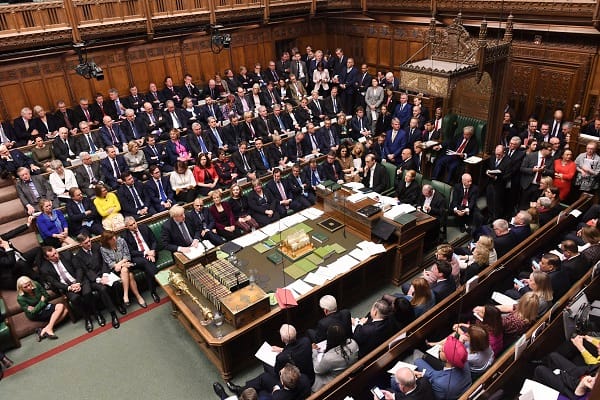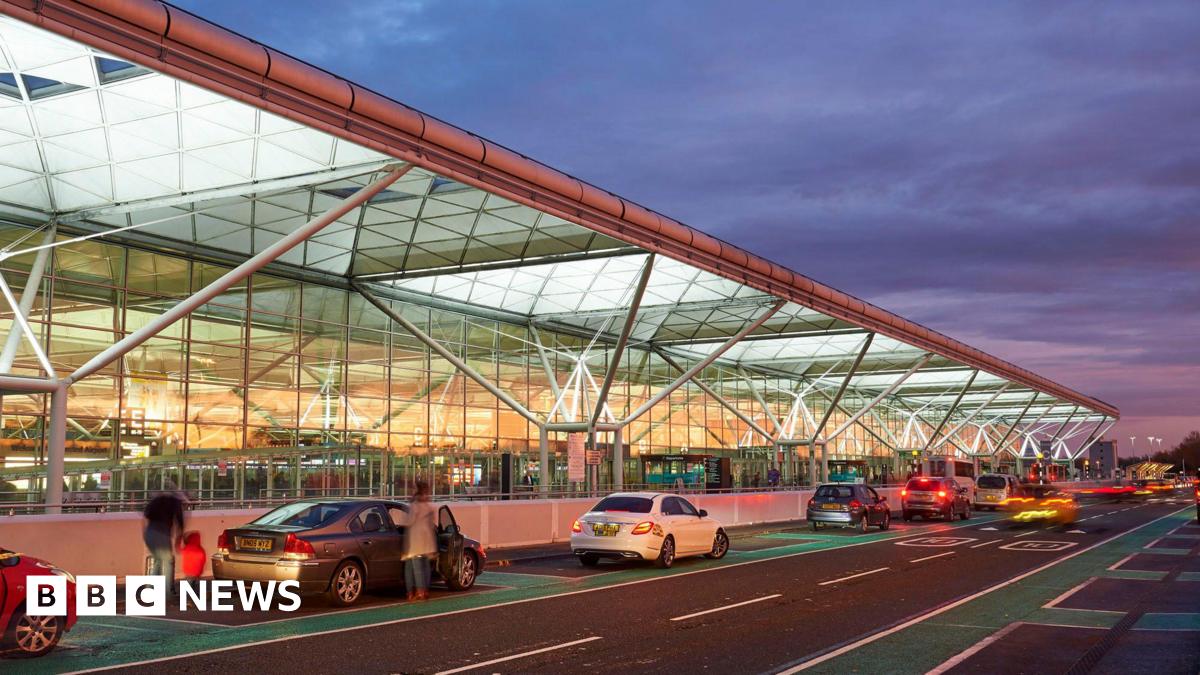Bussiness
Post-election economic and financial outlook – London Business News | Londonlovesbusiness.com

What lies ahead after the election? On 20th June we hosted a webinar to address this issue. Here is a summary of my opening comments on the economic and financial outlook.
My colleague, Tom Kimche, then focussed on the implications for personal finance and investment, followed by a host of questions. You can watch the video of the event here. We focussed on the implications of a Labour victory, as indicated by current opinion polls.
There were three parts to my comments: the economic outlook; fiscal policy after the election; other policy issues.
An imbalanced economy
First, the economic backdrop. The UK is an imbalanced economy. This is seen in terms of place, people and macroeconomic indicators. In place there are imbalances between London and the rest, urban versus rural and coastal versus inland areas. For people, it is young versus old, often linked to housing and owners versus renters, plus skilled versus unskilled workers with the latter impacting wages and opportunities.
Then there are macroeconomic imbalances, notably the twin current account and budget deficits. Much of this manifests itself in a focus on levelling-up the economy and public investment, both of which will likely figure prominently in Labour’s plans. There is a need to boost competitiveness, as the UK is a low growth, low investment and low productivity economy.
The key recent year is 2008. Trend growth has not recovered from that year’s Global Financial Crisis. Before 2008 the average rate of growth had been around 2.75%, now the trend rate of growth is significantly lower, with the Office for Budget Responsibility (OBR) projecting 1.67%. The economy has also been hit in recent years by a succession of shocks, including the pandemic, which led to significantly higher government debt. Brexit was also an economic shock, and the political crisis of 2016-19 triggered much uncertainty.
That being said, while the UK’s recent performance versus the major European G7 economies varies depending upon the time period chosen, all face similar challenges, particularly Germany and the UK, about how to raise economic growth. Also, the war in Ukraine has shone a light on energy policies across western Europe, including the UK. This is another area for the new government to address, as the UK balances the needs of energy security, and capacity, as it transitions to a net zero economy.
The positive message is that Keir Starmer has focused on the need for a pro-growth strategy. This is essential for the UK. While it is often said that all governments want stronger growth, the reality is that few achieve it. Now, in the wake of the sluggish performance since 2008, it is necessary to put a pro-growth strategy centre-stage. While this is positive, it is far from clear whether a new government will have the right policies for the UK to break out of its low growth trajectory.
The good news is that the economy is now recovering, as inflation decelerates, with growth set to pick up this year and next. Yet, when we compare now with 1997, when Labour last won power under Tony Blair, there is a significant difference.
Then, the UK was growing solidly heading into the election, while global growth was also far stronger, at over 4% compared with 3.2% now. In 1997, we were still benefiting from the aftermath of the peace dividend in contrast to now, with pressure for defence spending to rise. Then, debt levels were far lower at just over 35% of GDP, compared to close to 100% of GDP now. In short, the economic backdrop now is less favourable, with little room for policy manoeuvre.
One 1997 lesson, relevant for now, is that Chancellor Brown stuck to Labour’s commitment to uphold outgoing Chancellor Clarke’s spending plans. As a result, the first three years of that Labour government saw the UK run a budget surplus each year. This is highly unusual, as since the 1960s the UK has only run seven annual budget surpluses: two around the turn of the 1970s following Chancellor Jenkins’s fiscal plans; two at the height of the Lawson Boom; and three after Labour came to power in 1997.
It was only in spring 2000 that Labour moved from famine to feast in terms of higher public spending, after gaining credibility in the eyes of the financial markets. The Shadow Chancellor Rachel Reeves is conscious of the need to keep the financial markets onside, particularly in the aftermath of the financial market turmoil linked to the mini-Budget in 2022. This means committing to credible plans and upholding them. Hence, through this campaign she has remained committed to the fiscal plans outlined for the next five years by Chancellor Jeremy Hunt. Yet this has raised questions as to whether the approach is credible – hence the focus on tax and spending plans – and whether they add up.
Fiscal plans
The second part of my webinar talk focused on Labour’s likely fiscal policy. The current fiscal situation is poor. The ratio of debt to GDP is high, and while it may improve in the next couple of years, this should not divert attention from the danger that the UK could fall into a debt trap by the end of this decade, with an ever-rising share of debt to GDP.
Six of the G7 countries – Germany being the exception – face a similar danger. The UK’s challenge is not only the high level of debt, but also that future growth looks likely to be lower than the rate of interest paid on that debt. The relationship between growth and interest rates is key, as is controlling the overall level of debt.
Despite much criticism of the present Government’s fiscal rules, Labour appears committed to these rules – and to strengthening them further. Also, these rules imply very little fiscal headroom, perhaps just over £8 billion on current plans within five years. Moreover, economic recovery has already been factored into the present Government’s numbers that Labour will inherit, with the OBR forecasts pointing to growth of: 0.8% (2024), 1.9% (2025) and 2.0% (2026).
This year’s growth may prove to be slightly higher, providing some additional headroom this autumn, when Reeves will deliver her first Budget and this is likely to be followed soon after by the next Spending Review. Yet, the present fiscal plans already look challenging, and may prove difficult to meet, as under current plans the tax take is already high and public spending plans look tough, particularly for non-ringfenced departments.
Labour plans a New Fiscal Lock. Financial markets will like this, initially at least, although they will still need to see that the numbers add up. While creating a new fiscal lock is not in the same category as making the Bank of England independent in 1997, it is along the same lines of greater technocratic oversight of policy, albeit here in terms of fiscal policy.
It would, though, be strange for a government to cede too much power in the area of expenditure and taxation. While we don’t have the details, it will probably include empowering the OBR, with more rules including one that favours capital spending. The latter may include borrowing to invest, a favourite of Gordon Brown’s.
Also, consensus economic thinking appears supportive of the view that public spending and thus, in turn, taxes are trending up, which may be in line with Labour thinking. Labour may also focus on a public sector balance sheet, such as public sector net wealth. Although three quarters of the liabilities would be offset by assets, it does not change the fundamentals regarding the sustainability of the public finances.
The immediate implications might include a cautious initial approach, with increased spending plans in the autumn for some departments, funded by higher taxes, and higher capital spending, linked to boosting future economic growth, funded by long-term borrowing.
There are six options for the public finances, regardless of who is in power: economic growth; reform; borrow; control public spending; tax; plus a sixth – which is unlikely for now and is outside the domain of the government – namely a loose monetary policy aimed at achieving financial repression through very low interest rates. The latter penalises savers to ease the pain for borrowers, or makes it possible to inflate the debt away. The six are not mutually inconsistent and may occur simultaneously.
Of these, the two that should warrant most attention are growth and reform, both because of the present high level of debt and because of the poor longer-term trajectory outlined by the OBR for the public finances.
When it comes to growth, the issue is what will the Government focus on? Previously I have highlighted the need for a pro-growth strategy that covers three broad areas: monetary and financial stability; fiscal credibility; and a supply-side agenda spanning a host of areas including investment, innovation and infrastructure.
Under Labour, there is a heavy emphasis on the supply-side, underpinned by structural changes linked to a new industrial policy and a renewed emphasis on a move to net zero. The focus for Labour is likely to be on how to boost public investment (including a new National Wealth Fund), with increased capital investment (helped by new fiscal rules).
The perceived success of President Biden’s industrial policy is likely to be used as part of their template, helped by tax incentives. But even in the US there is much angst about the regulatory burden on business. While higher public investment is needed in the UK, it will also be important to have an environment in which the private sector will want to invest. I don’t think anyone is expecting the UK regulatory regime to become lighter, and in terms of tax, no change is expected on corporation taxes.
In terms of the public finances, reform may also need to be aimed at boosting public sector productivity or the efficiency of public spending, thus allowing spending to be kept under control and creating space for reduced borrowing.
While Labour has committed to a triple lock on income tax, national insurance and VAT rates, it is important to note that existing fiscal plans already point to a rising tax take as allowances are not indexed, and as noted, to a tough squeeze on some departmental spending. While higher economic growth is the key, and can deliver higher future revenues, the focus later this year might be on sources of higher revenue, to fund increased spending.
There are a range of possibilities here, including: property tax, capital gains tax (CGT) and fuel duty. The UK already taxes property heavily, but through stamp duty which discourages turnover. A re-rating of council tax bands is likely and would lead to higher revenues, perhaps to fund local spending.
Imposing a CGT on a main property would not make economic sense, as it would disincentivise spending on upgrading properties. A huge proportion of self-employed and sole traders are employed in this area of the economy. CGT produced £16.7 billion in 2021/22 and the breakdown for that year – the latest we have available – shows that 1% of people who paid CGT paid 45% of it, so it is a progressive tax.
In addition, 38% of those liable for CGT had gains of less than £50k and taxable income of less than £38k so it is not just paid by large earners. Only 7% of CGT is from business asset disposal relief, renamed from entrepreneurs’ relief in 2020. Fuel duty, meanwhile, which could hit many low earners in rural areas, may be back on the agenda, as it has been frozen for so long.
Other potential tax changes, perhaps not immediately, are a re-examination of reliefs (this could include pension relief for higher rate payers) and of inheritance tax, which could be widened or eventually become a tax based on the recipient and viewed as income. Although the danger about fiddling with these is that the super-rich are mobile, while changing such taxes will likely hit more the middle-classes, who it is often said are already squeezed.
No longer paying interest on bank reserves is another option – a legacy of quantitative easing – whereby the taxpayer currently pays around £25 billion per year to commercial banks, as interest is paid at base rate on their reserves at the Bank of England. Not paying interest on some or all of this would provide fiscal room to be used elsewhere.
A wealth tax (with an initial focus on property) may prove to be an eventual route taken, in future years as Labour has ruled it out for now, especially if growth disappoints and upward pressure on public spending remains.
Other policy areas
The third part of my talk focused on other policy areas. Here, in particular, I would draw attention to two reforms that have the potential, if carried out well, to help radically boost UK economic growth potential: institutional and planning reform.
One is institutional reform across Whitehall, although we do not know what form this might take. This has been an ongoing topic since the early 1960s, then in terms of breaking up the Treasury, although this is not expected to be the focus now. There may be a sensible move to horizontal integration across Whitehall departments, focused on delivering specific policies – and this would be alongside the empowering of groups such as Skills England, Great British Energy and the new National Wealth Fund.
The other necessary reform, widely endorsed by economists, regards planning. This has the potential to be transformational, not just in terms of building more homes, but offices, too. New towns may be part of this approach.
I covered, too, in my talk, three other important policy areas to take note of:
- a future closer relationship with the EU is possible. Although it is important to be mindful of the comments from Keir Starmer during a BBC television interview during the campaign that the UK’s economic problems long pre-date Brexit.
- the green agenda and net zero, linked in turn to a new industrial policy involving higher public investment;
- and a focus on public investment and the creation of a new sovereign wealth fund, although the issue remains how to fund it, plus where the money is spent.
Housing, as noted, will figure prominently. The focus here should be on more supply, with demand linked to population growth, supply and finance being the main drivers, plus there will likely be a shift in the balance from landlords to renters.
Increased workers’ rights are another central feature. This is a concern, it seems, for many businesses, with uncertainty about what it may mean in practice and whether this will reflect a more general shift from shareholders to stakeholders. Also, it may include a focus on the living wage. The living wage is higher than the minimum wage, and it has worked as it is voluntary. If there was a shift to a compulsory, and thus higher living wage, small firms would face increased pressure on costs.
It is also unclear how this will transmit into relative wage differentials, and we may see upward pressure on the wage bill, without a corresponding rise in productivity. If so, it will reinforce the likelihood of interest rates settling, while lower than now, at a higher level than pre-pandemic.
Finally, I touched on levelling-up. Previously I have linked this to the need to focus on FEED: Finance, Enterprise, Empower and Diffusion. For Labour, despite a large majority, it may be a focus on empowering local areas that comes to the fore.
In conclusion, while the economy looks set to rebound over the next 18 months – with interest rates falling, too – the key question is whether the future policy approach will deliver the stronger, sustained growth driven by higher investment that the economy needs.
While Labour is right to focus on the need for a pro-growth strategy, it is far from clear whether it will be successful. Monetary, fiscal policy and the supply-side agenda all need to align and be credible, boosting the UK’s competitiveness and its low investment and low productivity. Financial markets will likely give Labour the benefit of the doubt to begin with, but will need to be convinced.
Please note, the value of your investments can go down as well as up.










